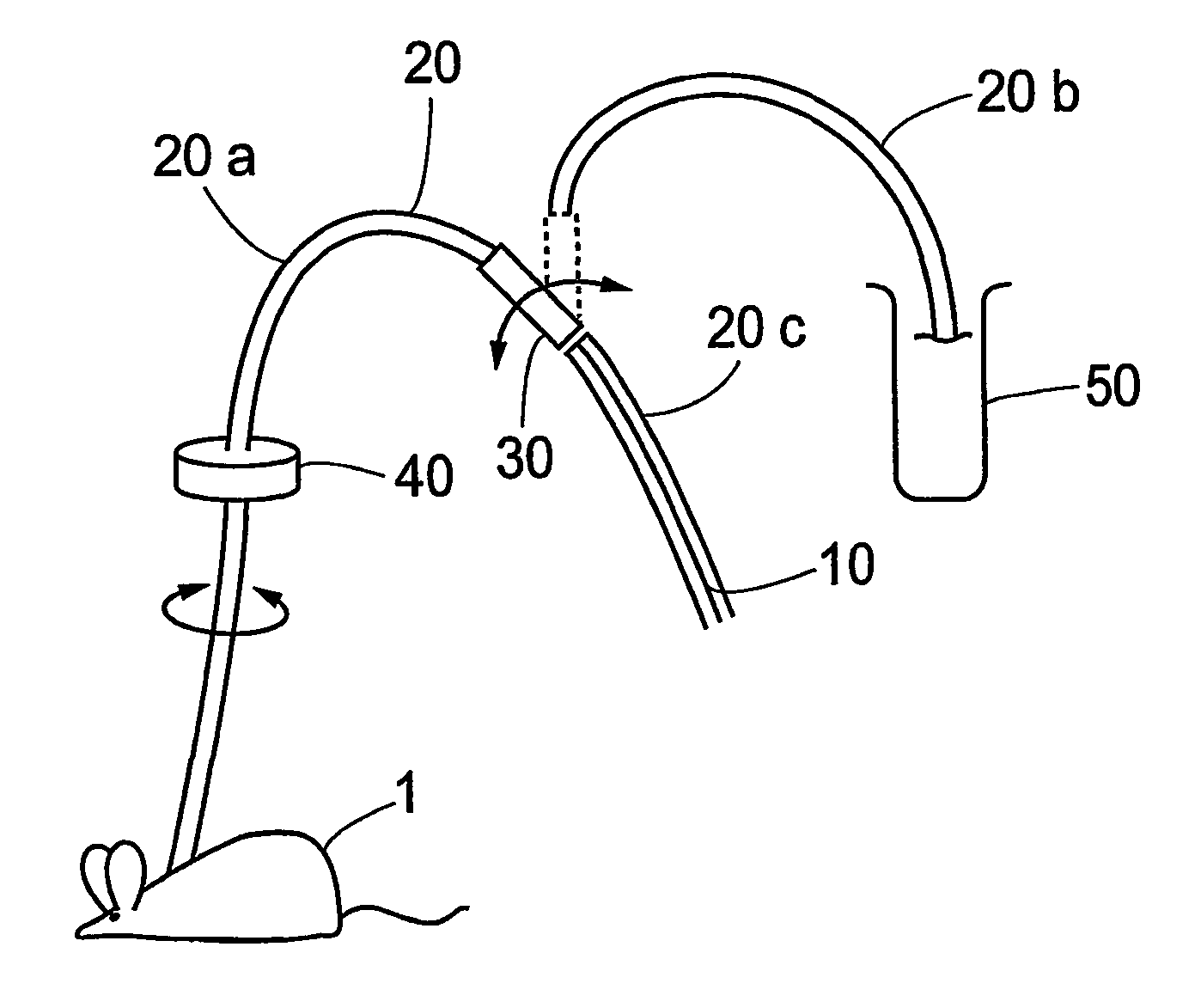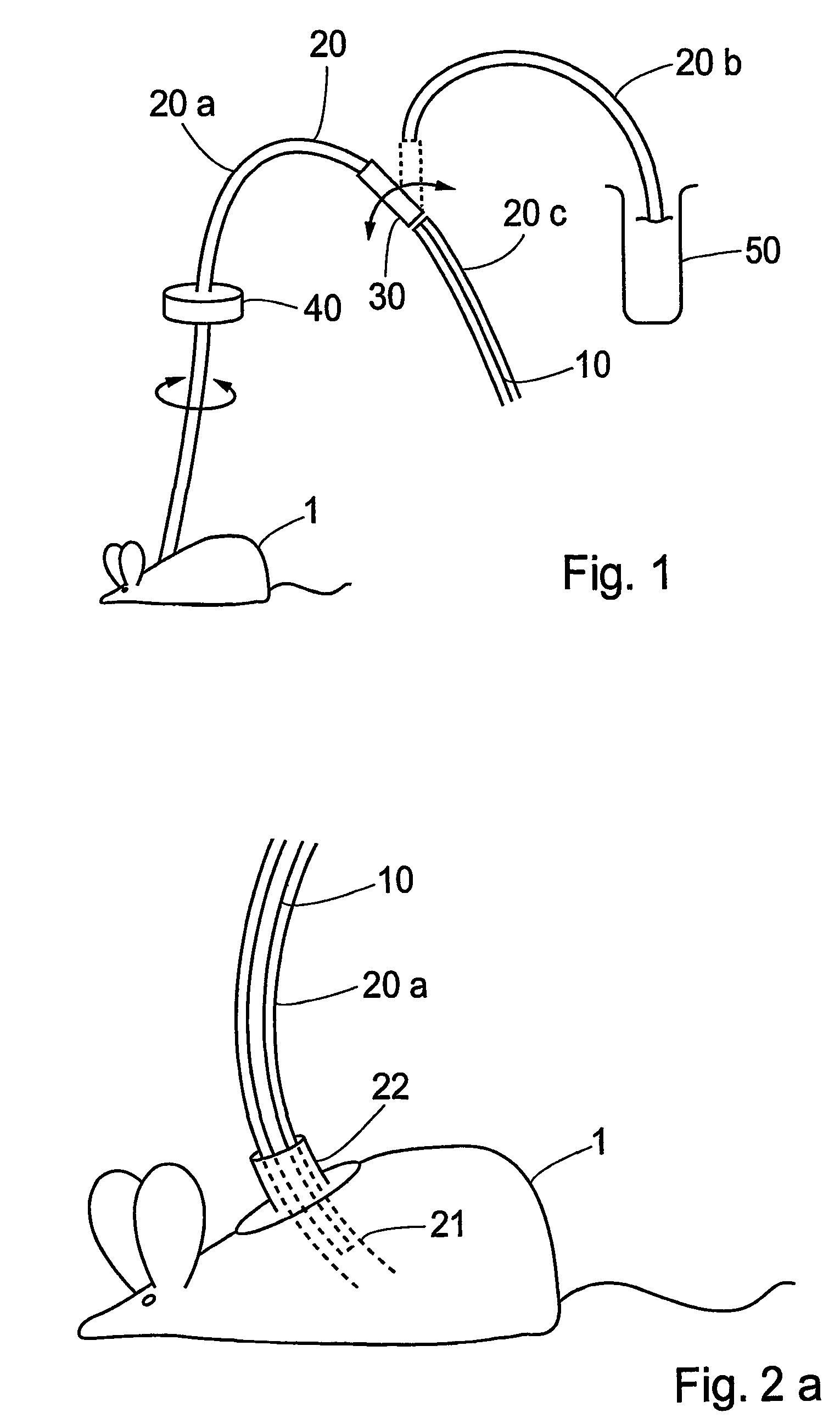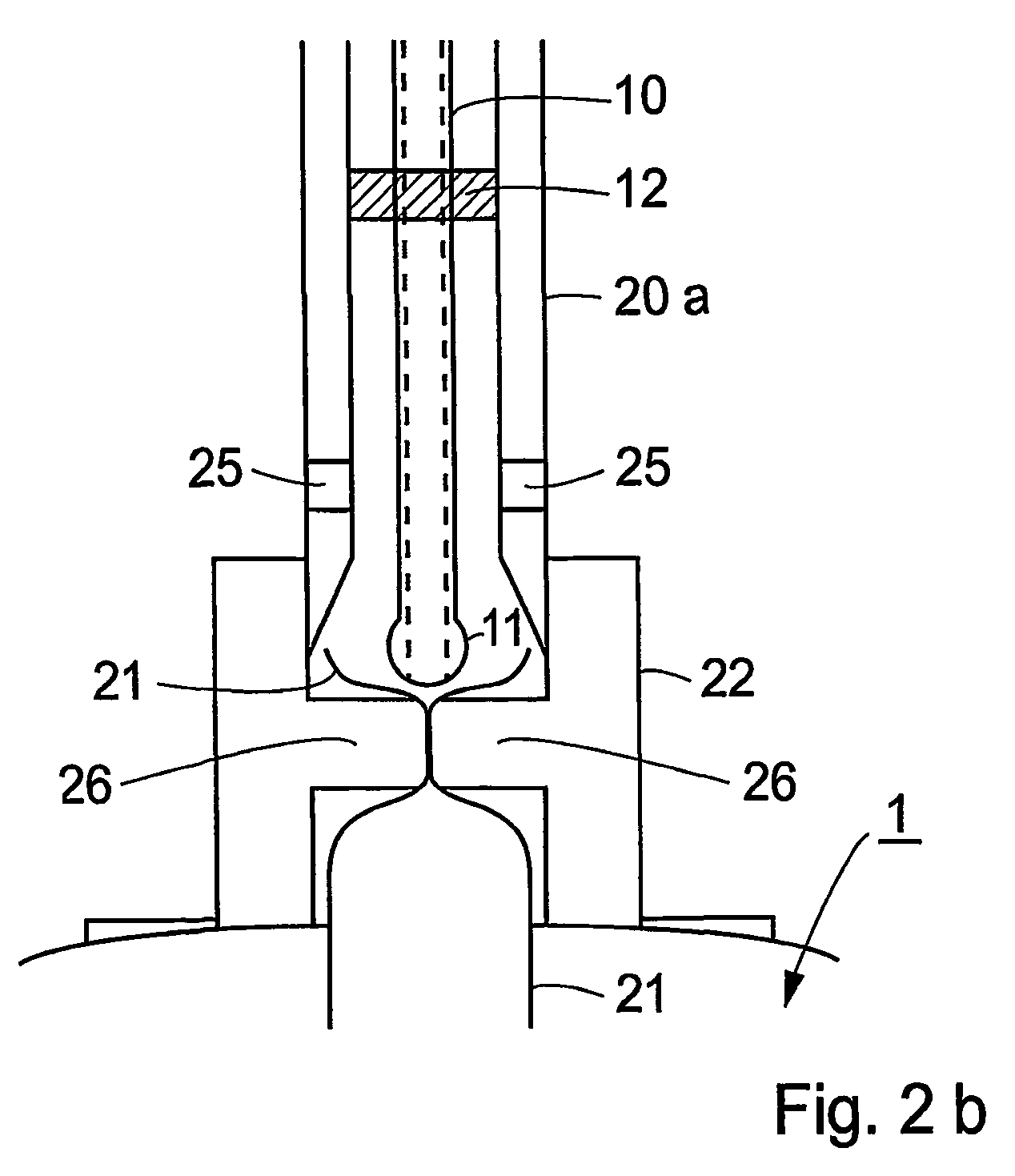System and method for automatic taking of specimens
a technology of automatic specimen collection and automatic taking, which is applied in the field of system and a method for automatic specimen collection, can solve the problems of unintentional contamination of specimens, risk of adhesion of specimens to the inside, and contamination along the inside of the tubing system, so as to achieve the effect of reducing unintentional contamination
- Summary
- Abstract
- Description
- Claims
- Application Information
AI Technical Summary
Benefits of technology
Problems solved by technology
Method used
Image
Examples
Embodiment Construction
System Overview
[0030]In its most general embodiment, the system in accordance with the invention comprises a specimen collector that is configured to be lead or guided by means of a guiding device coupled to a test object. The test object is in most cases a living being but possibly also some other test object that is the subject of repetitive taking of specimen. The described embodiments of the invention are directed to collecting, sampling or taking liquid specimen for example from a vessel in a living being or from some other kind of vessel containing a liquid. With a modification the specimen collector may be adapted to collect solid material samples or specimen from a test object.
[0031]After the taking of a specimen or sample, the specimen is temporarily stored in a cavity or specimen grip or storage at the distal end of the specimen collector. The specimen collector is thereafter by means of the guiding device lead to a specimen container such as a test glass or test tube wher...
PUM
 Login to View More
Login to View More Abstract
Description
Claims
Application Information
 Login to View More
Login to View More - R&D
- Intellectual Property
- Life Sciences
- Materials
- Tech Scout
- Unparalleled Data Quality
- Higher Quality Content
- 60% Fewer Hallucinations
Browse by: Latest US Patents, China's latest patents, Technical Efficacy Thesaurus, Application Domain, Technology Topic, Popular Technical Reports.
© 2025 PatSnap. All rights reserved.Legal|Privacy policy|Modern Slavery Act Transparency Statement|Sitemap|About US| Contact US: help@patsnap.com



